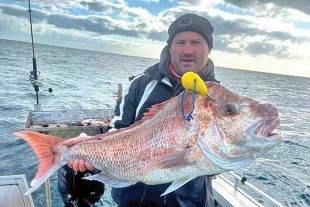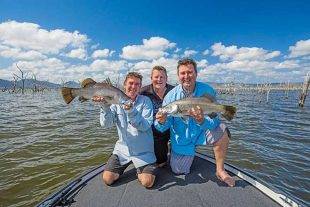THESE days, you can find a diverse range of quality lures for just about every species in every size and colour combination imaginable.
I certainly have a long list of hard-bodies, plastics and metal jigs that I rely on in the far north. Unfortunately, they don’t come cheap and we go through plenty up here.
Last Christmas, while on holiday visiting family in Bundaberg, I finally found a bit of time to play around and have a go at making my own lures.
When it comes to high-speed spinning for species such as tuna, mackerel, trevally, queenfish and even coral trout across shallow reefs, you don’t need to spend huge amounts of money on metal lures. I look for just a few things in a metal spinning lure. It must have enough weight for long casts (usually 40-60g), it needs quality split rings and trebles to handle hard-pulling fish, and it must be a radiant metallic colour that reflects sunlight (silver and gold are favourites).
With this in mind, I thought I would have a crack and try to make lures myself. After getting some stainless steel from a scrap metal yard I had a go at cutting and shaping a metal slug-style lure.
However, I was unhappy with the weight and somewhat frustrated with how time consuming it was to make just one lure. Canning that idea, I decided I would visit a few local second-hand shops including Vinnies. I bought a stash of stainless steel butter knives for about 30c each. I made sure the knives actually were stainless steel, which is resistant to rust and corrosion. You’ll know because ‘stainless steel’ or ‘SS’ will be written on the blade.
With about 70 knives in hand, I headed back to my old man’s workshop. Although the rest of the family thought I was wasting my time, I was confident the knives would make effective lures. They had plenty of weight for casting, a long fishy profile, and being silver would reflect sunlight and catch the attention of nearby pelagics. Furthermore, half the work was done and I would be able to make a lot of lures in a shorter time.
The challenge would be drilling through the stainless steel.
While I wouldn’t recommend using your precious stainless knife set that has been handed down through generations, if you would like to give it a go, this is what I did.
1. Cut off the stainless knife blade with an angle grinder, leaving about 2cm of blade.
2. Cut the knife handles to a few different sizes. I cut mine to 80mm, 110mm and 140mm.
3. Smooth and round the sharp blade edges with a bench grinder.
4. Use a centre punch and hammer to make an impression at each end where you want to drill a hole to put the split rings.
5. Use a drill press to drill the holes. Apply oil to both the drill bit and knife to avoid burning out the drill bit. After trying both cobalt and masonry drill bits we found the masonry was best (although we still went through a couple of bits). Make sure you drill the holes no more than a few millimetres from the ends of the knives so you can put the split rings through.
6. Buy and attach quality split rings through the holes using split-ring pliers. Add the treble hook onto the split ring at the blade end.
7. While not necessary, waterproof holographic stickers can be added for extra attraction. Cut them to length and use a Stanley knife to trim at the crease/edges. You can buy a roll of scale-pattern tape from Kingston Lures (kingstonlures.com.au) in a range of colours. Eyes can also be added, but again are not necessary.
Knives can also be used to make small skirted jigs for bottom species. Simply put a small slit in the top of a squid skirt and pull it over the split ring and lure.
Use super glue to fix the head of the squid skirt to the lure. Jig assist hooks can be used instead of treble hooks. This will stop the lure getting snagged on reef. I found these jigs very effective on coral trout.
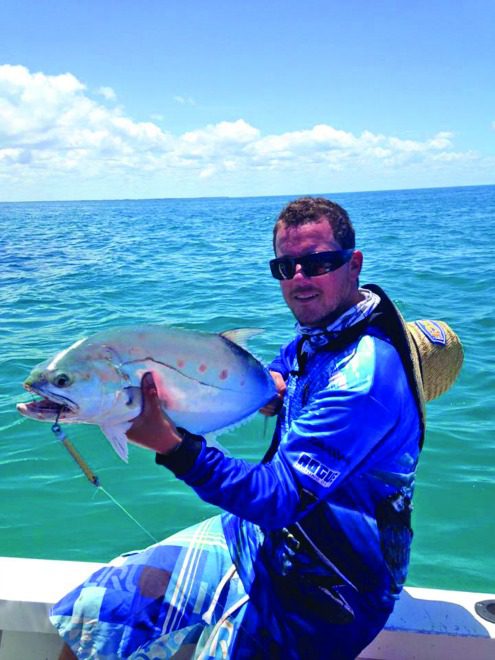
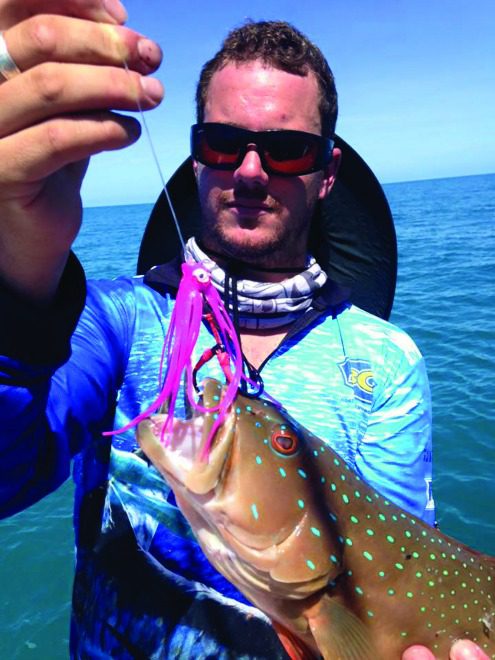
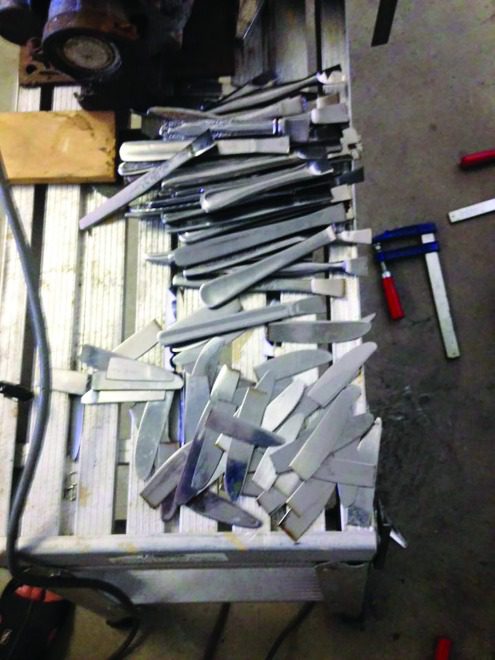
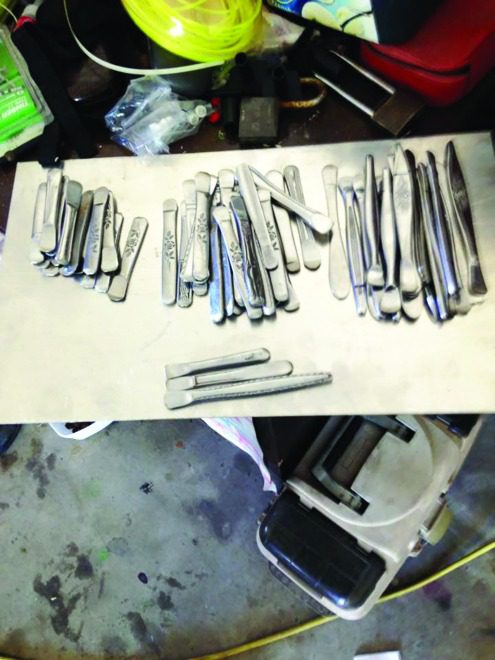
Having tested the lures in the Torres Strait and off Cape York for the past eight months, I am stoked with their effectiveness. Many of the lures have a realistic side to side darting action that gets the fish excited. The first time I cast one it resulted in a solid northern bluefin tuna.
Since then I have caught over 12 species including loads of giant, golden and bludger trevally, barracuda, longtail tuna, mack tuna, spanish mackerel, queenfish, coral trout, grass sweetlip, spanish flag and large-mouth nannygai (which I must admit was a nice surprise when dropping to the bottom).
On a recent trip down the Cape from Thursday Island our crew landed well over 30 northern bluefin and mack tuna on the homemade metal lures over a couple of days.
When your mates start asking if they can tie on one of your lures you know they must be all right.
A video of how I made these lures can be found on my Fishing Missions YouTube channel titled ‘Homemade Fishing Lures (stainless steel butter knives)’.
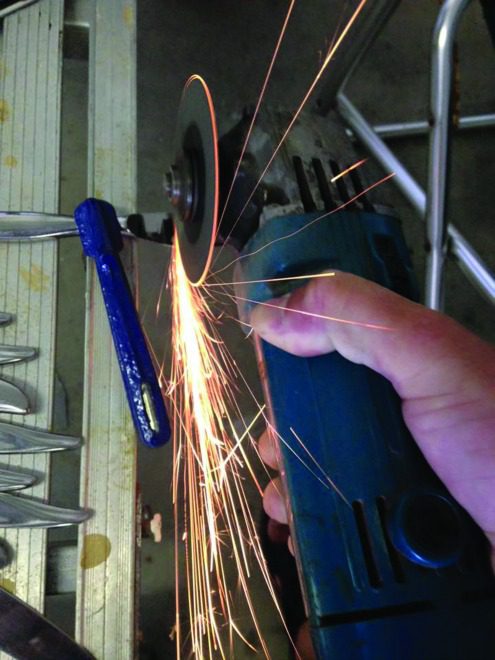
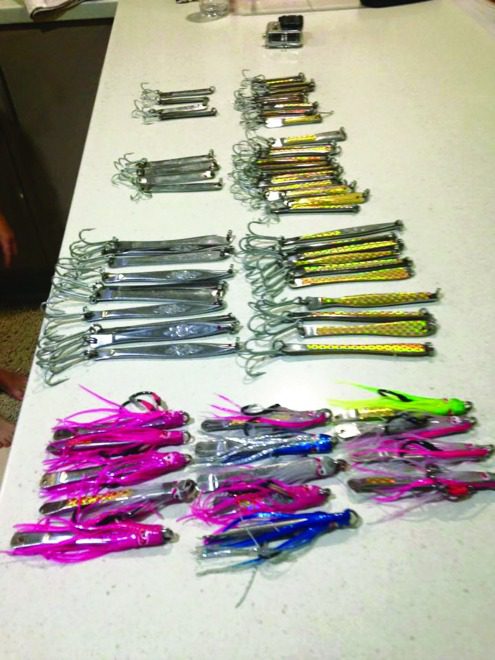
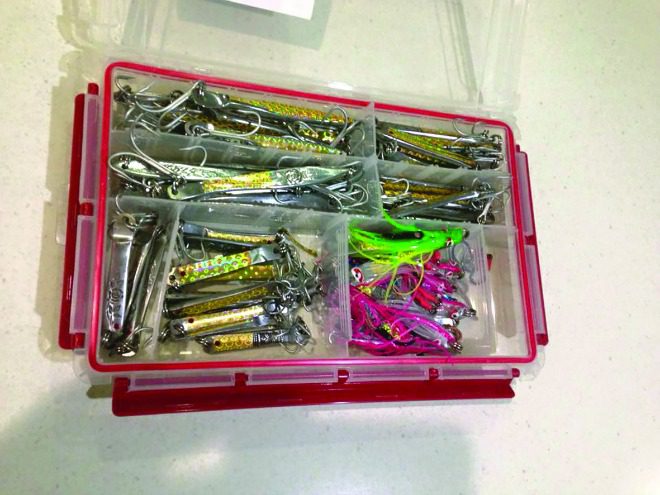
 Bush 'n Beach Fishing Magazine Location reports & tips for fishing, boating, camping, kayaking, 4WDing in Queensland and Northern NSW
Bush 'n Beach Fishing Magazine Location reports & tips for fishing, boating, camping, kayaking, 4WDing in Queensland and Northern NSW







